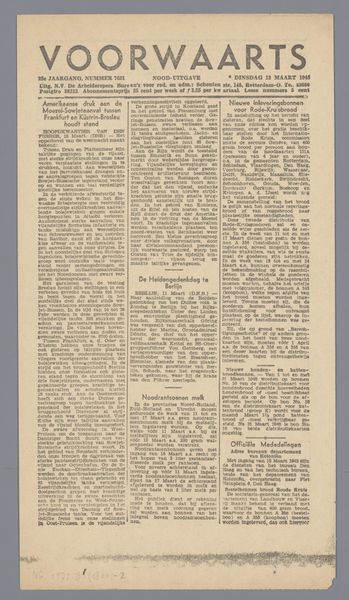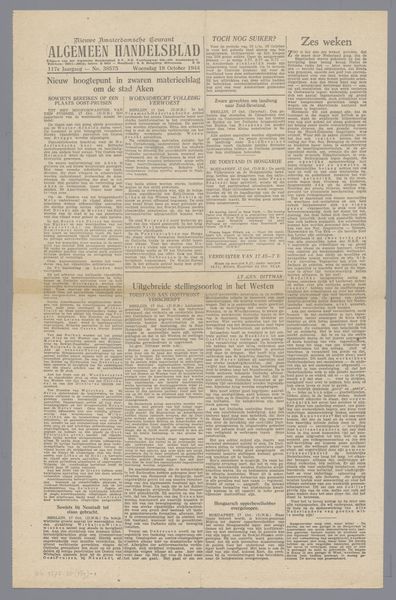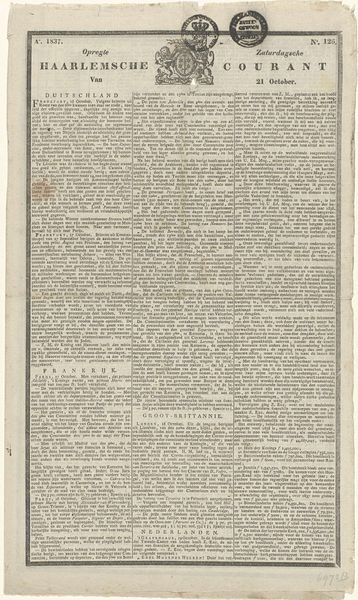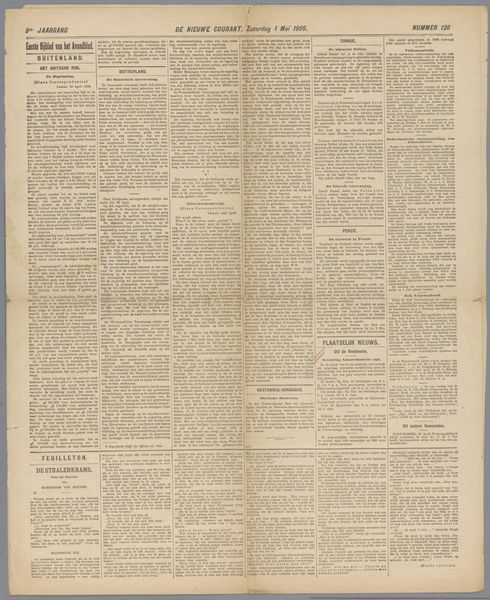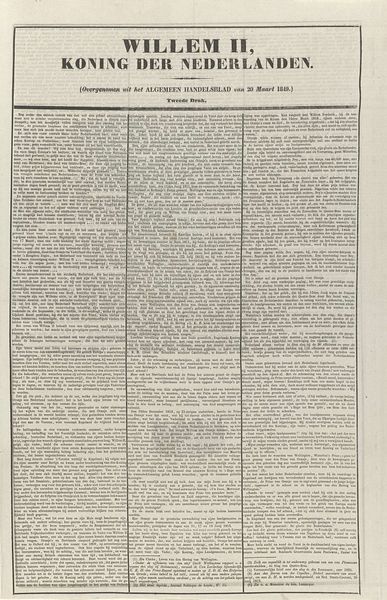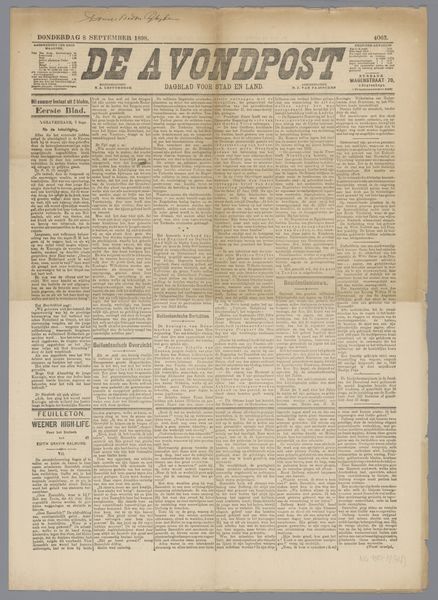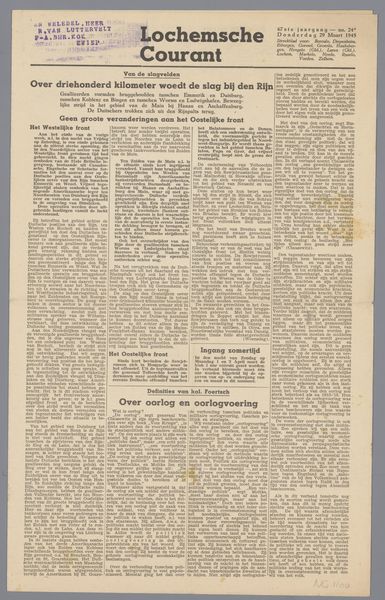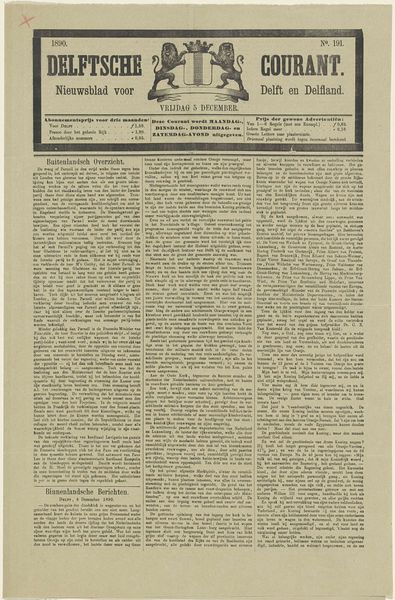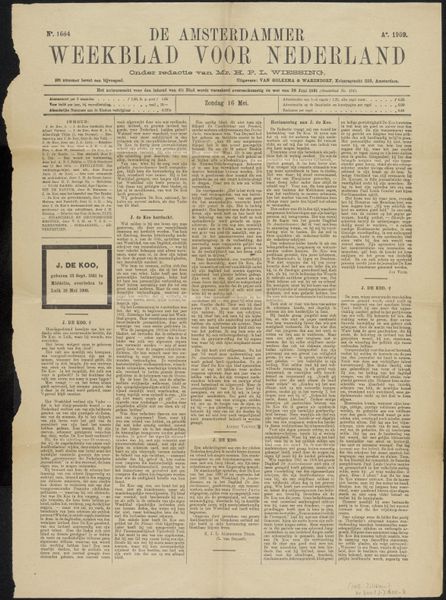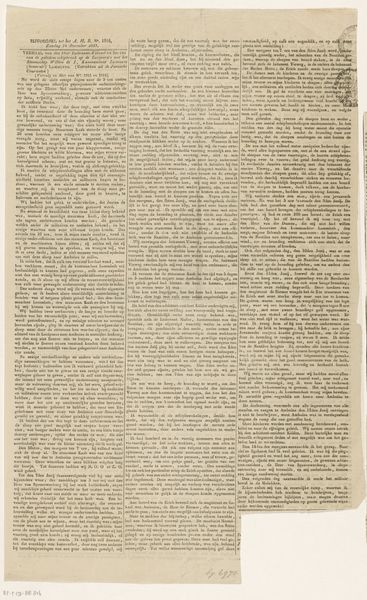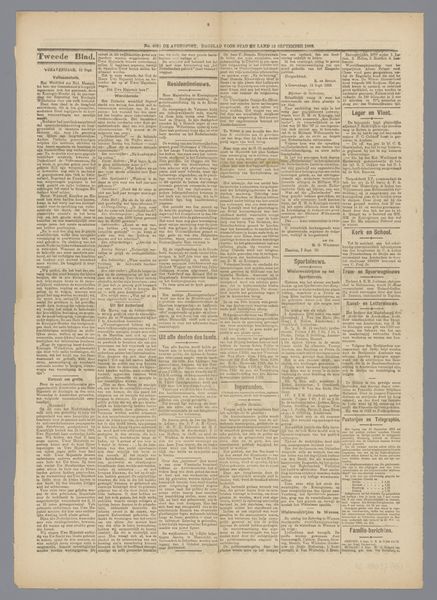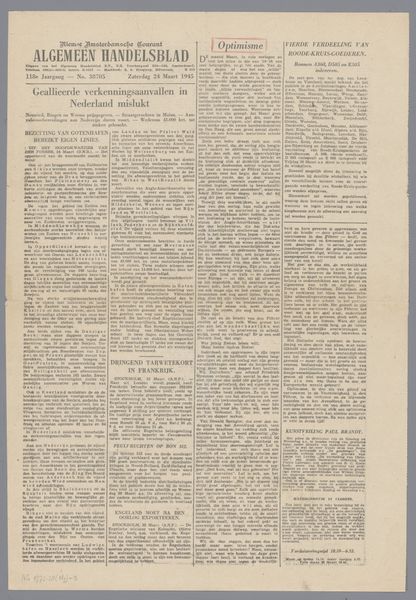
drawing, graphic-art, print, paper, typography, appropriation, poster
#
drawing
#
graphic-art
# print
#
book
#
paper
#
typography
#
appropriation
#
journal
#
newspaper layout
#
stylized text
#
thick font
#
poster
Dimensions: height 755 mm, width 330 mm
Copyright: Rijks Museum: Open Domain
Curator: Before us, we have a fascinating piece of graphic art titled "Bulletin van boekhandelaar J. Francis Ruggles te Bronson," or roughly translated, "Bulletin of bookseller J. Francis Ruggles at Bronson," potentially from 1885. It seems to be an advertising poster. What's your initial impression? Editor: Overwhelming! So much text. It looks like a wall of printed words, interspersed with little illustrative gems. It reminds me of those old broadsides from the 19th century, filled with information and hoping to grab your attention. Curator: Absolutely. And within that visual noise, what images stand out? For me, it is the figures of learned men and images of books—icons that signify progress and knowledge during a specific historical moment of enlightenment. Editor: For me, it's that little image near the top of the man reading, bathed in light! Is that divine inspiration he’s experiencing? This single symbolic scene connects literacy and learning with the heavens, as if enlightenment were bestowed by some holy power. It suggests a reverence for books and the pursuit of knowledge that’s deeply ingrained in our culture. Curator: A cultural reverence deeply interwoven with issues of accessibility and power. It's striking how publications like these, despite advertising wider access to books, would largely be consumed by a literate and privileged audience. In many ways, advertisements like these contributed to shaping social norms around literacy and class. Editor: True. Even the layout and typography send a message, the varied fonts, the densely packed text... It speaks to an era where printed material was a precious commodity, worthy of being crammed onto a single sheet. Each section like a little world with its own visual cues to tempt a reader to find their next mental pursuit. Curator: It's this intersection of commerce and ideology that's particularly interesting. How consumerism itself became a vector for disseminating certain values. This poster reminds us that the concept of the "marketplace of ideas" has always been mediated by those who controlled the printing presses and advertising space. Editor: And by those figures who choose, from those crowded pages, what next they'll read. Ultimately this object preserves a moment when book culture was not merely entertainment but a powerful form of civic participation and personal spiritual exploration. Curator: Precisely. The bulletin reflects an interesting nexus of commerce and the hunger for self-improvement during a specific period. Editor: Indeed. It leaves you thinking about how books and advertisements—mirrors of culture—are inseparable even now.
Comments
No comments
Be the first to comment and join the conversation on the ultimate creative platform.
